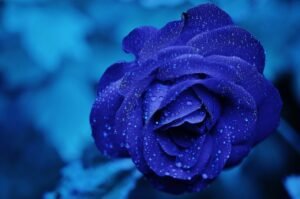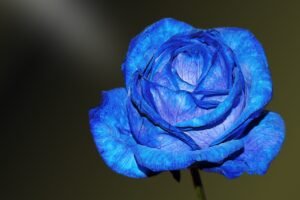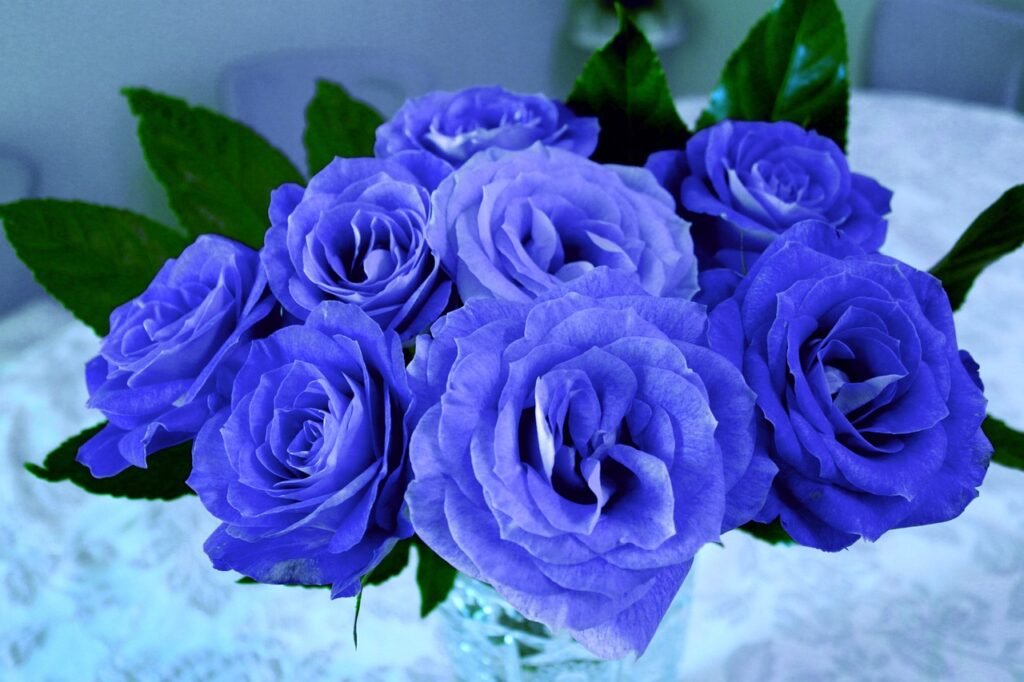Introduction
Blue roses have long captivated the human imagination, symbolizing mystery, the unattainable, and the extraordinary. Unlike their naturally occurring counterparts in shades of red, pink, yellow, and white, blue roses do not exist in nature. This unique characteristic has only heightened their allure, leading to a variety of interpretations in literature, art, and science. This analysis explores the significance of blue roses from multiple perspectives, including their cultural symbolism, historical attempts to create them, and their place in contemporary biotechnology.
Cultural Symbolism
Blue roses have a rich tapestry of meanings across different cultures. Traditionally, they are seen as a symbol of the impossible or the unattainable. This stems from the fact that roses, which naturally do not produce blue pigments due to the absence of the delphinidin gene, cannot occur in this color naturally.
- Romantic Symbolism: In literature and art, blue roses are often used to represent love that is mysterious and unattainable. This is epitomized in various stories and poems where a lover presents a blue rose as a token of their profound yet hopeless love.
- Spiritual and Mystical Connotations: Blue roses are also associated with the spiritual realm, often symbolizing a quest for the divine or the pursuit of the metaphysical. They embody the idea of seeking something beyond ordinary human experience, much like the search for the Holy Grail.
- Modern Interpretations: In contemporary times, blue roses are sometimes associated with new beginnings and the quest for new knowledge. They represent the journey into the unknown, innovation, and the breaking of traditional boundaries.

Historical Attempts to Create Blue Roses
The journey to create a true blue rose has been long and arduous, involving numerous failed attempts and partial successes. The quest began in the 19th century with horticulturists and breeders striving to achieve this elusive goal through hybridization and selective breeding.
- Early Efforts: Initially, breeders attempted to cross-breed roses with other blue flowers like violets and delphiniums. These efforts, however, resulted in only purplish or lavender hues rather than a true blue.
- 20th Century Innovations: The development of genetic engineering in the latter part of the 20th century provided new hope. Scientists began to experiment with introducing the delphinidin gene, responsible for blue pigment in other flowers, into roses. Despite significant advancements, the results were often less than perfect, yielding flowers that were more bluish-lilac than true blue.
- Modern Biotechnology: In 2004, a breakthrough was announced by Suntory, a Japanese company, which created a genetically modified rose with blue pigmentation. Although not a pure blue, this rose, named “Applause,” represents the closest approximation yet achieved through scientific means. It opened new discussions on the possibilities and ethics of genetic modification in horticulture.
Scientific and Technological Perspective
From a scientific viewpoint, the creation of blue roses represents a significant achievement in the field of genetic engineering and biotechnology.
- Genetic Modification: The process involved in creating blue roses is complex and requires precise manipulation of genetic material. Scientists use Agrobacterium-mediated transformation to introduce the delphinidin gene from blue flowers like pansies or petunias into the rose genome. This method has allowed for the partial success seen with varieties like “Applause.”
- Challenges: One of the primary challenges in creating blue roses is the presence of natural pigments in roses, which tend to dominate and overshadow the introduced blue pigments. Additionally, the pH level within the petals affects pigment expression, further complicating the quest for a true blue hue.
- Future Prospects: Advances in CRISPR and other gene-editing technologies hold promise for overcoming these obstacles. By precisely editing or silencing specific genes, scientists hope to one day produce a rose with a more vibrant and authentic blue color.

Economic and Commercial Impact
The development of blue roses has also had notable economic and commercial implications.
- Market Demand: Blue roses, due to their rarity and unique color, are highly sought after in the floral market. They are often marketed as luxury items and can command higher prices than other roses. This makes them an attractive product for florists and breeders.
- Branding and Marketing: Companies that have succeeded in creating blue roses, such as Suntory, have used these flowers to bolster their brand image and market presence. Blue roses have become a symbol of innovation and cutting-edge technology in horticulture.
- Consumer Perception: The novelty of blue roses continues to capture consumer interest. They are often used in special arrangements and events where uniqueness and exclusivity are desired. This consumer fascination drives continuous efforts in research and development within the floral industry.
Ethical Considerations
The creation of blue roses through genetic modification raises several ethical questions.
- Genetic Engineering: The manipulation of plant genomes to create new colors and traits prompts discussions about the ethical implications of genetic engineering. Concerns include potential impacts on natural ecosystems and the long-term effects of introducing genetically modified organisms into the environment.
- Cultural Impact: There is also debate over whether creating blue roses diminishes their symbolic value. Some argue that part of their allure lies in their natural impossibility, and by creating them artificially, we may be stripping away some of their mystique and cultural significance.
- Sustainability: The sustainability of genetically modified flowers is another area of concern. Ensuring that these innovations do not harm the environment or lead to unforeseen ecological consequences is crucial.
Conclusion
Blue roses, with their rich symbolism and the scientific journey to create them, encapsulate the intersection of nature, culture, and technology. They symbolize the unattainable and the mysterious, inspiring both romantic and scientific quests. Despite the challenges and ethical considerations, the pursuit of blue roses represents human ingenuity and our enduring desire to push the boundaries of what is possible. As technology advances, we may one day see a true blue rose, but until then, the journey itself continues to be as fascinating as the elusive flower it seeks to create.

